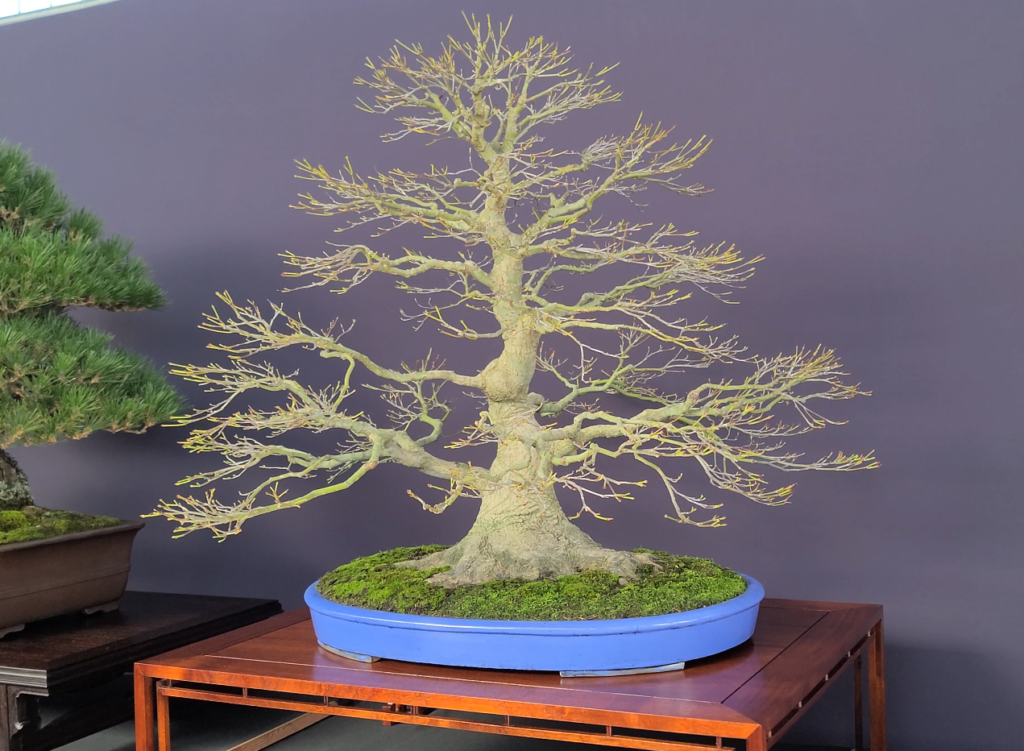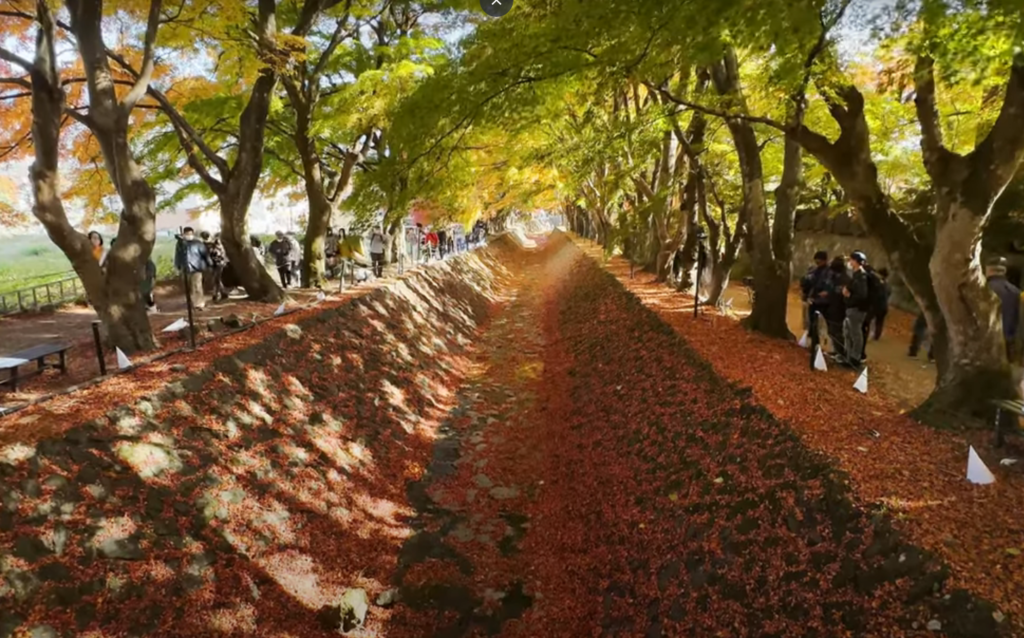Hey there, fellow bonsai enthusiasts! Today, we’re diving into the world of Japanese Maple Bonsai. In this blog, we’ll delve into the art of Japanese Maple Bonsai care, offering you a step-by-step maintenance schedule to keep your maple thriving. This guide applies to regular Japanese Maples, often referred to as green maples. Let’s start by getting to know these captivating trees a bit better and then jump straight into their seasonal care calendar.
Japanese Maple Bonsai Care Guide & Maintenance Schedule
Table of contents:
*click above to jump to the topic

Introduction
Japanese Maple, scientifically known as Acer Palmatum, holds a special place in the hearts of many bonsai enthusiasts. What sets this tree apart is its captivating display of colors throughout the seasons. From vibrant greens in spring and summer to striking hues of yellow, red, and orange in the fall, Japanese Maples never fail to mesmerize. In Japan, the fall foliage is even celebrated as “Koyo,” drawing visitors much like the cherry blossoms do in spring.
Now, the key to successfully nurturing Japanese Maples lies in understanding their preferences. These beauties thrive in humid and northern climates but can struggle in hot and humid areas (like mine, unfortunately!). But don’t worry; I’ve got some tips to help your Japanese Maple flourish even in challenging conditions. The secret? Quality water and proper shading. Let me share what I’ve learned from my mentor, Ed Clark, a commercial Japanese maple grower here in our hot and dry Central Valley.

Spring
Fertilizing: If you’ve been following my blog, you already know our approach to fertilizing deciduous trees. During the developmental stage, feel free to fertilize year-round, especially if you’re working on thickening the trunk. However, when your tree reaches the refinement stage, it’s time to cut back on the fertilizer to keep your ramification tight and neat.
Repotting: Late winter into spring is the ideal time to consider repotting Japanese Maples. Look for signs like bud swelling, and that’s your green light for repotting. For younger trees, you can even bare-root them by washing their roots and trimming up to 50%. On the other hand, for more mature or refined trees, focus on pruning roots that grow downward and encourage lateral root growth.
Soil Mixture: The right soil mix can make all the difference. For young trees, I recommend a mix of 2 parts Akadama, 1 part Pumice, and 1 part Lava Rock. As your tree matures, you can transition to 100% Akadama. However, do adapt your mix to your local climate and watering style.
Watering: I’ve previously shared a detailed guide on watering deciduous bonsai, which you can find ( Watering Deciduous Bonsai Trees ). Simply put, if you’re using the recommended soil mixture and the soil surface looks dry, it’s time to water. Keep in mind that Japanese Maples are sensitive to water quality, so check your water’s TDS (Total Dissolved Solids). If it’s over 300, you might encounter issues. Consider an RO water system to address this, as discussed in our Bonsai Reverse Osmosis Setup Guide.
Pest and Disease: During spring, I generally avoid spraying any treatments and allow the tree to grow freely.
Grafting: Spring is also a suitable time for grafting, particularly thread grafting, which is relatively straightforward. Stay tuned for a future post on this topic.
Air Layering: Late spring, around May to June, is prime time for air layering. Keep an eye out for our upcoming post dedicated to this technique.
Pruning and Styling: While it’s usually best to prune Japanese Maples in summer, you can also perform pruning during spring, preferably before the buds pop.
Cut Back or Pinching: Once your tree has started growing and the leaves have hardened off (turned dark green), you can trim it back to maintain its shape. Another useful technique is pinching, which helps control growth and shape. We’ll dive deeper into this in a future post.
Wiring: Wiring is feasible just before the leaves emerge in spring. Be sure to check daily to prevent the wire from biting into the branches.
Summer
Fertilizing: During summer, if you aim to thicken the trunk, continue with the same fertilization regimen as in spring. However, for trees in the refinement stage, it’s advisable to skip fertilization to avoid promoting larger leaves.
Watering: Adjust your watering routine to accommodate the hotter summer weather. Refer to my blog for tips on watering deciduous trees. If you’re like me and work during the day, consider setting up an automatic watering system once you’ve determined your tree’s watering frequency.
Pest and Disease: Summer is when insects are most active. Apply pest or disease treatments only if necessary. Malathion works well for pests, while Clearys 3336 or Daconil are effective fungicides.
Pruning and Styling: Early summer is an excellent time for trunk chops or significant cutbacks. Ensure your tree is healthy before attempting any major changes. For trees in development, summer is a time of relative inaction, as Japanese Maples don’t experience vigorous growth during peak summer months.
Wiring: Wiring is still viable in summer, especially after pruning or cutbacks. Keep a close eye to prevent wire damage.
Fall
Fertilizing: Fall is a critical time for fertilization. Since your tree is done growing vigorously and has only a short time to flush, it’s the perfect moment to provide essential nutrients. For young trees, continue with regular fertilization, while refined trees benefit from organic fertilizers to boost their health before dormancy.
Watering: Stick to your established watering routine, keeping an eye on the soil’s top layer.
Pest and Disease: Just like in summer, apply treatments only if you notice issues with your tree’s health.
Pruning and Styling: Early fall is suitable for pruning or cutbacks, but as mid-fall approaches, it’s best to refrain from major interventions, allowing the tree to prepare for dormancy.
Wiring: Consider postponing wiring until winter.
Winter
Watering: Even if the soil seems moist, water your deciduous tree approximately once a week during winter to ensure the core remains hydrated.
Pest and Disease: Winter is the time for fungicides like Lime Sulfur or Copper spray. Stay tuned for our future post on Pesticide and Fungicide.
Pruning and Stlying: Winter is an excellent opportunity for silhouette refinement in developed trees. Trim branches to fit your design.
Wiring: Winter is also a suitable time for wiring to set your tree’s branches in place before the spring growth spurt.
The End
There you have it, bonsai enthusiasts! Thanks for sticking around until the end. Be sure to visit our bonsai calendar page and bookmark it for future reference at Bonsai Calendar. Happy bonsai gardening!